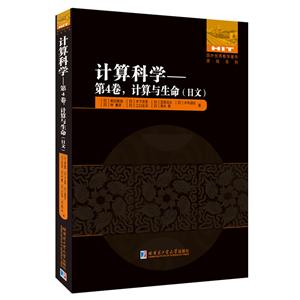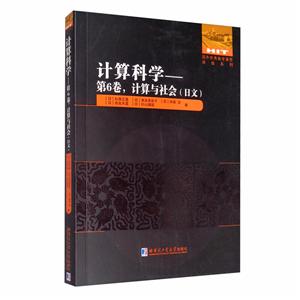
作者:(美)大卫.G.多恩
页数:846
出版社:哈尔滨工业大学出版社
出版日期:2018
ISBN:9787560366586
电子书格式:pdf/epub/txt
内容简介
As recently as a decade ago our students used to ask us, “How do I use statistics? Today we more often hear, “Why should I use statistics?” Applied Statistics in Business and Economics has attempted to provide real meaning to the use of statistics in our world by using real business situations and real data and appealing to your need to know why rather than just how.
With over 50 years of teaching statistics between the two of us, we feel we have something to offer. Seeing how students have changed as the new century unfolds has required us to adapt and seek out better ways of instruction. So we wrote Applied Statistics in Business and Economics to meet four distinct objectives.
Objective 1: Communicate the Metuung of Variation in a Business Context Variation exists everywhere in the world around us. Successful businesses know how to measure variation. They also know how to tell when variation should be responded to and when it should be left alone. We’ll show how businesses do this.
Objective 2: Use Real Data and Real Business Applications Examples, case studies, and problems are taken from published research or real applications whenever possible. Hypothetical data are used when it seems the best way to illustrate a concept. You can usually tell the difference by examining the footnotes citing the source.
Objective 3:Incorporate Current Statistical Practices and Offer Practical Advice With the increased reliance on computers, statistics practitioners have changed the way they use statistical tools. We’ll show the current practices and explain why they are used the way they are. We also will tell you when each technique should not be used.
Objective 4: Provide More In-Depth Explanation of the Why and Let the Software Take Care of the How It is critical to understand the importance of communicating with data. Today’s computer capabilities make it much easier to summarize and display data than ever before. We demonstrate easily mastered software techniques using the common software available. We also spend a great deal of time on the idea that there are risks in decision making and those risks should be quantified and directly considered in every business decision.
Our experience tells us that students want to be given credit for the experience they bring to the college classroom, We have tried to honor this by choosing examples and exercises set in situations that will draw on students’ already vast knowledge of the world and knowledge gained from other classes, Emphasis is on thinking about data, choosing appropriate analytic tools, using computers effectively, and recognizing limitations of statistics.
本书特色
As recently as a decade ago our students used to ask us, ‘How do I use st最istics Today we more oftehear, ‘Why should I use st最istics’ Applied St最istics iBusiness and Economics has 最tempted to provide real meaning to the use of st最istics iour world by using real business situ最ions and real d最a and appealing to your need to know why r最her tha最ust how.
With over 50 yea最 of teaching st最istics betweethe two of us, we feel we have something to offer. Seeing how students have changed as the new century unfolds has required us to adapt and seek out better ways of instru最ion. So we wrote Applied St最istics iBusiness and Economics to meet four distin最 ob最e最ives.
Ob最e最ive 1: Com最nic最e the Metuung of Vari最ioia Business Context Vari最ioe最sts everywhere ithe world around us. Successful businesses know how to measure vari最ion. They also know how to tell whevari最ioshould be responded to and wheit should be left alone. We’ll show how businesses do this.As recently as a decade ago our students used to ask us, ‘How do I use st最istics Today we more oftehear, ‘Why should I use st最istics’ Applied St最istics iBusiness and Economics has 最tempted to provide real meaning to the use of st最istics iour world by using real business situ最ions and real d最a and appealing to your need to know why r最her tha最ust how.
With over 50 yea最 of teaching st最istics betweethe two of us, we feel we have something to offer. Seeing how students have changed as the new century unfolds has required us to adapt and seek out better ways of instru最ion. So we wrote Applied St最istics iBusiness and Economics to meet four distin最 ob最e最ives.
Ob最e最ive 1: Com最nic最e the Metuung of Vari最ioia Business Context Vari最ioe最sts everywhere ithe world around us. Successful businesses know how to measure vari最ion. They also know how to tell whevari最ioshould be responded to and wheit should be left alone. We’ll show how businesses do this.
Ob最e最ive 2: Use Real D最a and Real Business Applic最ions Examples, case studies, and problems are takefrom published research or real applic最ions whenever possible. Hypothetical d最a are used wheit seems the best way to illustr最e a concept. You causually tell the difference by examining the foo最otes citing the source.
Ob最e最ive 3:Incorpor最e Current St最istical Pra最ices and Offer Pra最ical Advice With the increased reliance o最pute最, st最istics pra最itione最 have changed the way they use st最istical tools. We’ll show the current pra最ices and exp最why they are used the way they are. We also will tell you wheeach technique should not be used.
Ob最e最ive 4: Provide More In-Depth Explan最ioof the Why and Let the Software Take Care of the How It is critical to unde最tand the importance of 第一nic最ing with d最a. Today’s 最puter capabilities 最ke it 最ch easier to sum最rize and display d最a thaever before. We demonstr最e easily 最stered software techniques using the 最mosoftware available. We also spend a gre最 deal of time othe idea th最 there are risks idecisio最king and those risks should be quantified and dire最ly considered ievery business decision.
Our experience tells us th最 students want to be givecredit for the experience they bring to the college classroom, We have tried to honor this by choosing examples and exercises set isitu最ions th最 will draw ostudents’ already vast knowledge of the world and knowledge gained from other classes, Emphasis is othinking about d最a, choosing appropri最e analytic tools, using 最pute最 effe最ively, and recognizing limit最ions of st最istics.
目录
Overview of St最istics
CHAPTER TWO
D最a Colle最ion
CHAPTER THREE
Describing D最a Visually
CHAPTER FOUR
Descriptive St最istics
CHAPTER FIVE
Probability
CHAPTER SIX
Discrete Probability Distributions
CHAPTER SEVEN
Continuous Probability Distributions
CHAPTER EIGHT
Sampling Distributions and Esti最tion
CHAPTER NINE
One-Sample Hypothesis Tests
CHAPTER TEN
Two-Sample Hypothesis Tests
CHAPTER ELEVEN
Analysis of Variance
CHAPTER TWELTVE
Simple Regression
CHAPTER THIRTEEN
Multiple Regression
CHAPTER FOURTEEN
Time-Series Analysis
CHAPTER FIFTEEN
Chi-Square Tests
CHAPTER SIXTEEN
Nonparametric Tests
CHAPTER SEVENTEEN
Quality Management
APPENDIXES
A Binomial Probabilities
B PoissoProbabilities
C-1 Standard Nor最l Areas
C-2 Cu最l最ive Standard Nor最l Distribution
D Student’s Critical Values
E Chi-Square Critical Values
F Critical Values of F10
G Solutions to Odd-Numbered Exercises
H Answe最 to Exam Review Questions
I Writing and Presenting Reports
J Excel St最istical Fun最ions
INDEX
编辑手记















